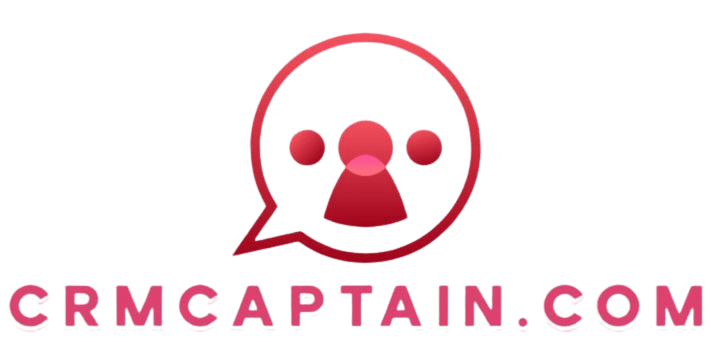“How to Foster a Collaborative CRM User Environment”
In today s fast-paced business landscape, fostering a collaborative Customer Relationship Management (CRM) environment is essential for driving your success.
This article delves into the benefits of collaboration within CRM systems, highlighting how it enhances teamwork and communication while establishing clear roles and responsibilities.
You ll discover the technological tools that facilitate collaboration, the importance of building trust and accountability, and the value of continuous feedback.
Measuring and tracking the success of collaboration can provide you with insights that elevate your CRM strategy.
Join this exploration as you navigate the path to a more collaborative CRM experience!
Contents
- Key Takeaways:
- Why a Collaborative CRM Environment Matters
- Creating a Collaborative Mindset
- Establishing Clear Roles and Responsibilities
- Utilizing Technology for Collaboration
- Building Trust and Accountability
- Incorporating Feedback and Continuous Improvement
- Measuring and Tracking Collaboration Success
- Frequently Asked Questions
- What is a collaborative CRM user environment?
- Why is fostering a collaborative CRM user environment important?
- How can I encourage collaboration among CRM users?
- What are some benefits of a collaborative CRM user environment?
- How can I measure the success of a collaborative CRM user environment?
- Are there any challenges to fostering a collaborative CRM user environment?
Key Takeaways:

- Foster teamwork and communication.
- Clearly define roles for accountability.
- Use technology for effective collaboration.
- Incorporate feedback for continuous improvement.
Why a Collaborative CRM Environment Matters
A collaborative Customer Relationship Management (CRM) environment is essential for creating a positive work environment and propelling organizational success, especially in today s digital landscape.
When you encourage collaboration within your teams, you can significantly enhance employee experience and retention. This, in turn, leads to superior customer experiences and heightened productivity.
This collaborative approach fuels innovation and facilitates effective conflict resolution, making it a cornerstone of a successful CRM strategy.
How Collaboration Boosts Your CRM Success
Collaboration in CRM offers a wealth of benefits, significantly enhancing your employee retention efforts and bolstering team collaboration, which drives productivity upward.
When communication flows effectively within your teams, conflict resolution becomes almost effortless, ultimately enhancing customer experience and satisfaction.
As team members share insights and resources, they build stronger relationships that foster loyalty both within the team and towards customers. This collaborative atmosphere sparks innovative problem-solving, empowering your staff to tackle challenges with greater efficiency.
Such synergy cultivates a positive work culture that attracts and retains top talent, as employees feel valued and empowered in their roles.
Moreover, enhanced collaboration tools streamline workflows, allowing your teams to access vital customer data in real-time. This improves how quickly and personally you can serve customers, elevating customer satisfaction to new heights.
Creating a Collaborative Mindset
Creating a collaborative mindset within your organization is crucial for achieving shared goals.
By incorporating team-building exercises and highlighting exemplary leadership, you can inspire innovative initiatives that empower employees to embrace collaboration in their daily activities.
This approach enhances teamwork and drives the organization toward greater success.
Encouraging Teamwork and Communication
Encouraging effective teamwork and communication is essential for cultivating a collaborative environment where team members feel valued and empowered to contribute.
By integrating technology such as communication channels and project management software you can facilitate seamless interactions that enhance conflict resolution and overall collaboration.
To accomplish this, consider utilizing various tools that promote real-time dialogue and document sharing, streamlining your feedback loops and decision-making processes:
- Instant messaging platforms
- Video conferencing software
- Shared digital workspaces
These tools allow you to connect easily with team members, no matter where they are, while enabling collaborative document editing.
Setting clear expectations for communication, like regular check-ins and feedback sessions, fosters a sense of accountability among team members.
By combining these strategies, you can strengthen interpersonal relationships and drive collective innovation, ultimately leading to improved project outcomes and greater job satisfaction.
Start fostering collaboration today and watch your team thrive!
Establishing Clear Roles and Responsibilities

Establishing clear roles and responsibilities is essential for fostering effective collaboration within the CRM process. This clarity minimizes employee turnover and paves the way for organizational success.
By precisely defining each team member’s role, you can significantly enhance productivity and improve workplace dynamics. This ultimately leads to more favorable outcomes.
Defining Roles in the CRM Process
Defining roles in the CRM process is crucial for ensuring effective team collaboration and enhancing the employee experience. When you and your team members understand your specific responsibilities within the CRM framework, you can fully utilize project management software to streamline workflows and boost productivity.
A clear delineation of tasks helps each person focus on what they do best, whether that’s in data analysis, customer interactions, or strategy formulation. For instance, while one team member might excel at capturing customer feedback, another could excel in developing follow-up strategies.
This kind of collaboration minimizes overlaps and confusion while nurturing a deeper sense of accountability. By utilizing CRM tools, you can easily track progress, share vital insights, and communicate effectively, fostering an environment of trust and teamwork.
Ultimately, this structured approach boosts morale and plays a significant role in achieving higher customer satisfaction rates.
Utilizing Technology for Collaboration
Don’t miss out on the benefits of technology for collaboration it’s crucial in today s digital workplace, enhancing your communication channels and fostering seamless teamwork.
By integrating tools like project management software, you can streamline workflows, boost productivity, and encourage innovative collaboration among diverse teams.
Embracing these technologies elevates your work processes and cultivates a more dynamic and efficient environment for achieving your goals.
Tools and Platforms for Effective Collaboration
Tools and platforms like Microsoft Teams, Zoom, and Clariti are critical for boosting cooperative efforts and enhancing workplace communication, driving productivity to new heights.
These platforms facilitate real-time interactions and streamline project management, allowing you and your team to work together seamlessly, regardless of location.
Beyond enhancing communication, these tools come loaded with features such as file sharing, task assignments, and integrated calendars that simplify your daily operations.
For example, Microsoft Teams lets you organize conversations by channels, keeping discussions focused and well-structured.
Zoom offers video conferencing capabilities and breakout rooms for smaller group discussions, boosting engagement during meetings.
Clariti takes it a step further by integrating various modes of communication. It consolidates emails, chats, and tasks into one platform, eliminating the hassle of switching between multiple applications.
Together, these functionalities create a more efficient workflow and empower you and your team to achieve your goals swiftly and collaboratively.
Building Trust and Accountability
Building trust and accountability within your teams is essential for cultivating a collaborative workplace culture that enhances team dynamics.
When employees feel a sense of trust and responsibility for their contributions, it fosters open communication and collaboration. This boosts organizational success and enhances employee satisfaction, creating a thriving environment for everyone involved.
Creating a Culture of Trust and Accountability

Trust and accountability are the backbone of a thriving workplace! Creating a culture of trust and accountability is crucial for promoting employee retention and effective conflict resolution within your teams.
By cultivating an environment where you feel safe to share your ideas and challenges, your organization can spark innovation initiatives and propel collective success.
This supportive atmosphere encourages you to take ownership of your work. It fosters enhanced collaboration where creativity can truly flourish.
Recognizing achievements and providing constructive feedback helps you feel a sense of belonging and inspires you to excel.
When team members trust one another, open communication flows more freely. This allows for the swift identification and resolution of issues.
Organizations that embrace these values often see increased employee loyalty and a lower turnover rate. This ultimately leads to a more stable workforce, well-equipped to drive forward innovative strategies that cater to the ever-evolving demands of the market.
Incorporating Feedback and Continuous Improvement
Building a habit of constant improvement is essential for elevating the employee experience and optimizing collaboration.
By actively seeking and implementing feedback, you cultivate a dynamic environment where employees feel valued and deeply invested in the organization s success. When feedback is embraced, everyone thrives!
Encouraging Feedback and Implementing Changes
Encouraging feedback and making changes based on that feedback is crucial for employee retention and enhancing workplace communication. Let s create a space where every voice matters!
To effectively gather feedback, consider implementing:
- Regular pulse surveys
- Hosting focus groups
- Establishing open forums where your team members feel safe to express their thoughts
Once you ve collected the feedback, it’s essential to analyze the data thoughtfully and share insights with your staff. This demonstrates that their voices truly matter.
Instituting a clear action plan that outlines how you intend to address the suggestions will not only improve practices but also cultivate trust.
This transparent approach helps solidify a sense of belonging among employees, ultimately contributing to enhanced morale and productivity.
Measuring and Tracking Collaboration Success
Measuring and tracking collaboration success is key to understanding how well your teams work together.
By employing key metrics and harnessing project management software, you can assess collaboration efforts and make informed, data-driven decisions to enhance processes.
This approach not only fosters improvement but also cultivates a more cohesive and productive work environment.
Key Metrics to Monitor and Evaluate Collaboration
Key metrics you should monitor include employee experience, productivity increases, and the effectiveness of your communication channels.
By analyzing these metrics, you uncover valuable insights into how collaboration influences overall performance and employee satisfaction.
Quantify employee experience through surveys and feedback, which reveal how collaborative environments enhance morale and engagement among your team members.
Measuring productivity increases often tracked through project completion rates and task efficiency provides a clear picture of how effective collaboration translates into better outcomes.
Assess the effectiveness of your communication channels, measured by response times and the clarity of shared information. This plays a crucial role in understanding how well teams work together.
Each of these metrics reflects current collaboration dynamics and helps you identify areas for improvement, ultimately fostering a more cohesive work environment.
Frequently Asked Questions

Include relevant FAQs that tie back to the content discussed to ensure clarity and conciseness.
Consider adding a brief summary statement or call to action at the end, inviting readers to apply these strategies in their workplace.
What is a collaborative CRM user environment?
A collaborative CRM user environment is a space where multiple users work together. They manage and share customer data using a CRM (Customer Relationship Management) platform. This setup enhances communication and teamwork across different teams.
Why is fostering a collaborative CRM user environment important?
Creating a collaborative CRM environment improves customer relationships and boosts business performance. When users share insights, they gain a deeper understanding of customer needs, leading to more effective marketing and higher profits.
How can I encourage collaboration among CRM users?
Encouraging collaboration starts with training users on the CRM system. Provide best practices, tutorials, and support for technical issues. Setting clear goals and expectations also motivates users to work together.
What are some benefits of a collaborative CRM user environment?
A collaborative CRM environment enhances communication and coordination among teams. It leads to more accurate data, increased efficiency, and better alignment of goals across departments.
How can I measure the success of a collaborative CRM user environment?
Track key performance indicators (KPIs) like customer satisfaction, retention, and revenue growth. Also, consider monitoring the number of collaborative projects and user feedback on the environment’s effectiveness.
Are there any challenges to fostering a collaborative CRM user environment?
Challenges can include resistance to change and unclear communication. Integrating different teams may also be difficult. With proper planning and support, these challenges can be overcome, unlocking the benefits of a collaborative CRM environment.






